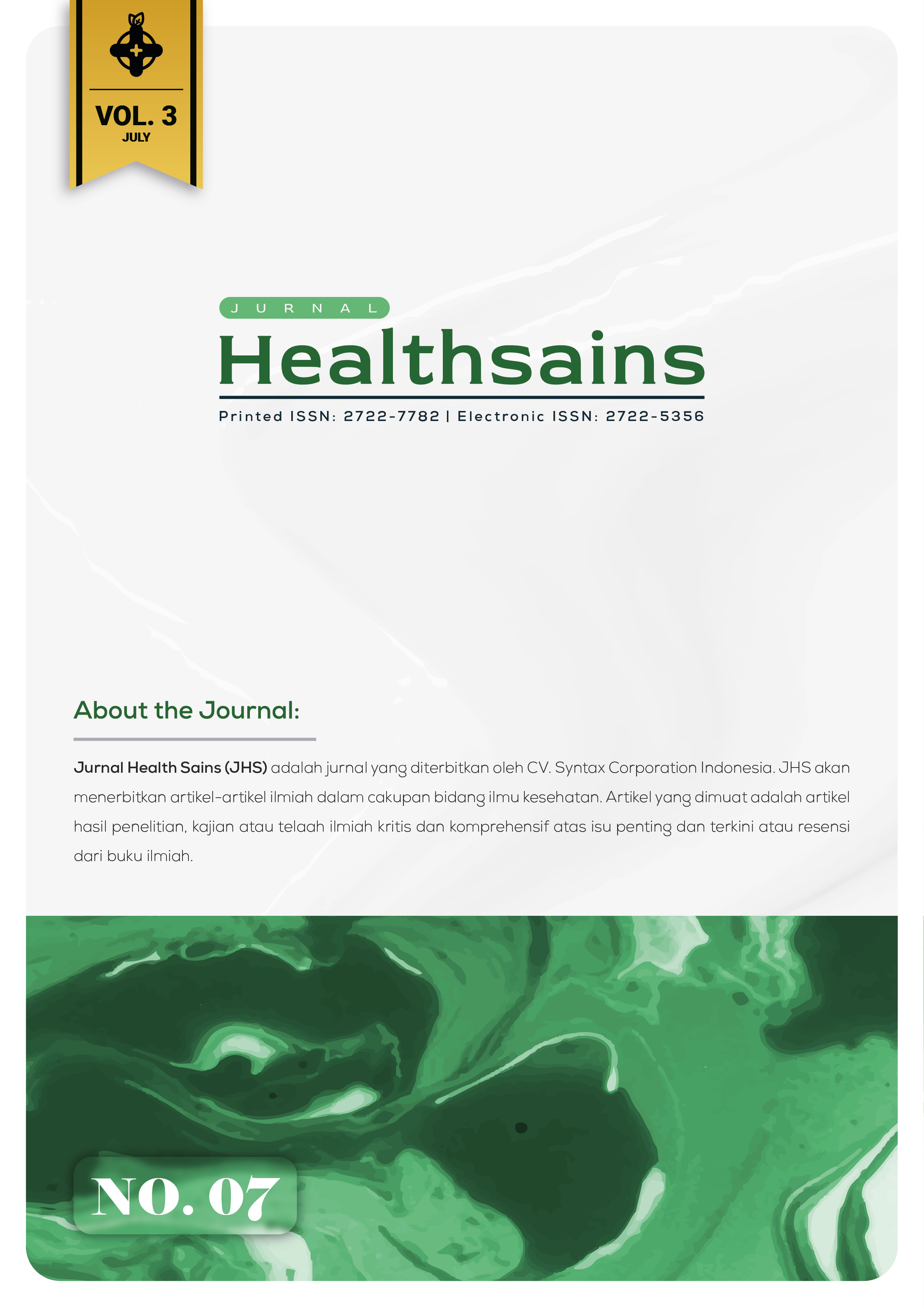Review jurnal Efektifitas ekstraksi antosianin dengan berbagai macam pelarut
DOI:
https://doi.org/10.46799/jhs.v3i7.527Keywords:
antosianin;, buah;, pelarut;, ekstraksi;, spektofotometri.Abstract
Anthocyanins are phenolic compounds and provide the natural color found in fruit. Fruits contain a distinctive color because they contain anthocyanin compounds. Anthocyanins have a special property of changing color at a certain pH which can specifically absorb light from the ultraviolet (UV) to the violet absorption region, but is stronger in the visible spectrum. This study describes the content of several samples of fruits that contain anthocyanin compounds as natural indicators. The purpose of this study was to determine the analysis of anthocyanin analysis of fruit using UV-Vis spectrophotometry method. This research is a literature study (Library Research). Literature research was conducted by looking for previous articles containing research related to anthocyanins from several fruit samples using the UV-Vis spectrophotometry method with various solvents used. The results showed that anthocyanins can be obtained by extraction. The anthocyanin extraction process is influenced by a number of factors such as the extraction method, the ratio of the size of the extraction tool, the condition of the material, the length of the extraction time, the type of acid, the concentration of acid/pH, the ratio of the material and the solvent, and the type of solvent. The more solvent used, the higher the extract yield. The higher the material:solvent ratio, the higher the yield due to the higher material:solvent ratio. The solvent has an effect on the total anthocyanin in the fruit studied in this literature review. Furthermore, this study showed that the best way to extract anthocyanin pigments from natural ingredients was by immersion, while the solvent that could optimally extract anthocyanin pigments was ethanol-HCl. The results of this review show that it is the most effective solvent that can be used to attract anthocyanins.
Published
Issue
Section
License
Copyright (c) 2022 Ranti Fitriyanti, Emma Emmawati, Anne Yuliantini

This work is licensed under a Creative Commons Attribution-ShareAlike 4.0 International License.
Authors who publish with this journal agree to the following terms:
- Authors retain copyright and grant the journal right of first publication with the work simultaneously licensed under aCreative Commons Attribution-ShareAlike 4.0 International (CC-BY-SA). that allows others to share the work with an acknowledgement of the work's authorship and initial publication in this journal.
- Authors are able to enter into separate, additional contractual arrangements for the non-exclusive distribution of the journal's published version of the work (e.g., post it to an institutional repository or publish it in a book), with an acknowledgement of its initial publication in this journal.
- Authors are permitted and encouraged to post their work online (e.g., in institutional repositories or on their website) prior to and during the submission process, as it can lead to productive exchanges, as well as earlier and greater citation of published work.






